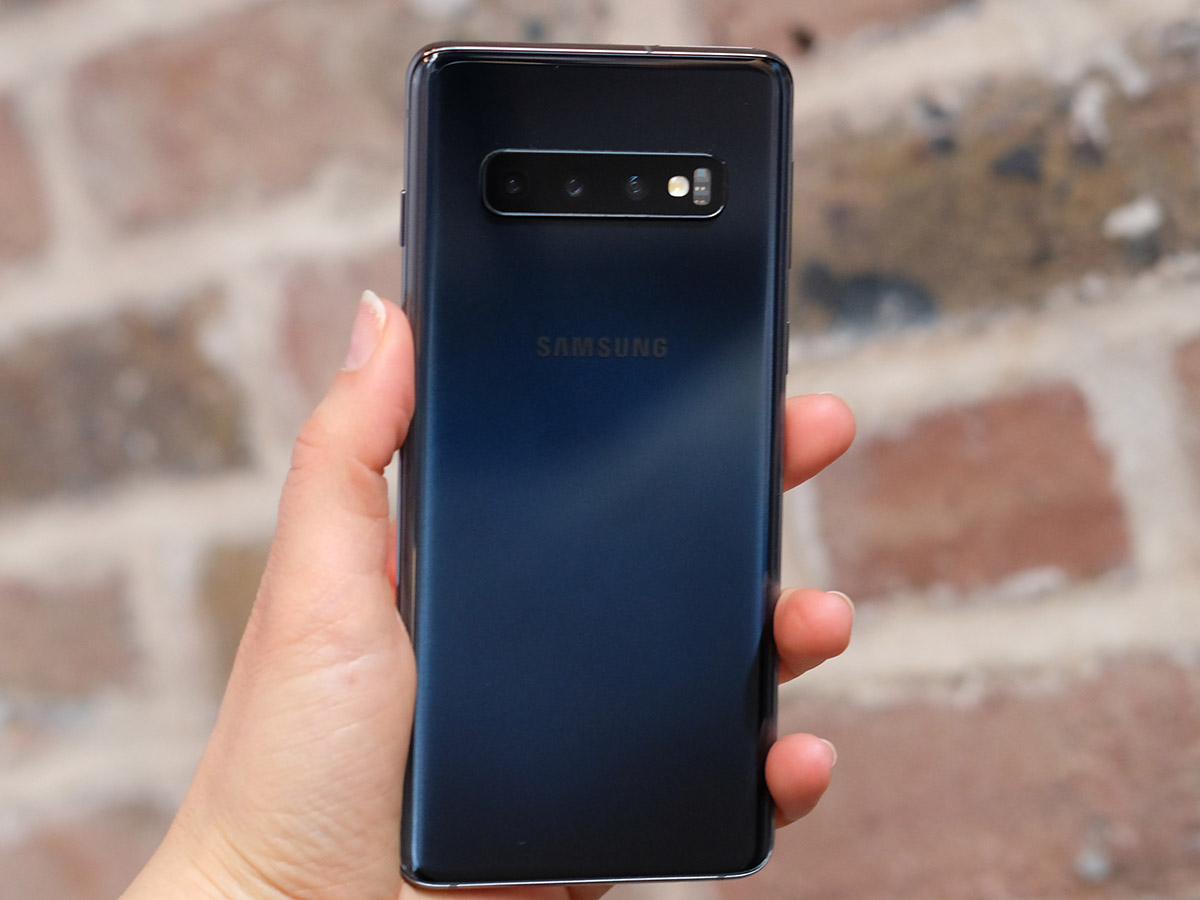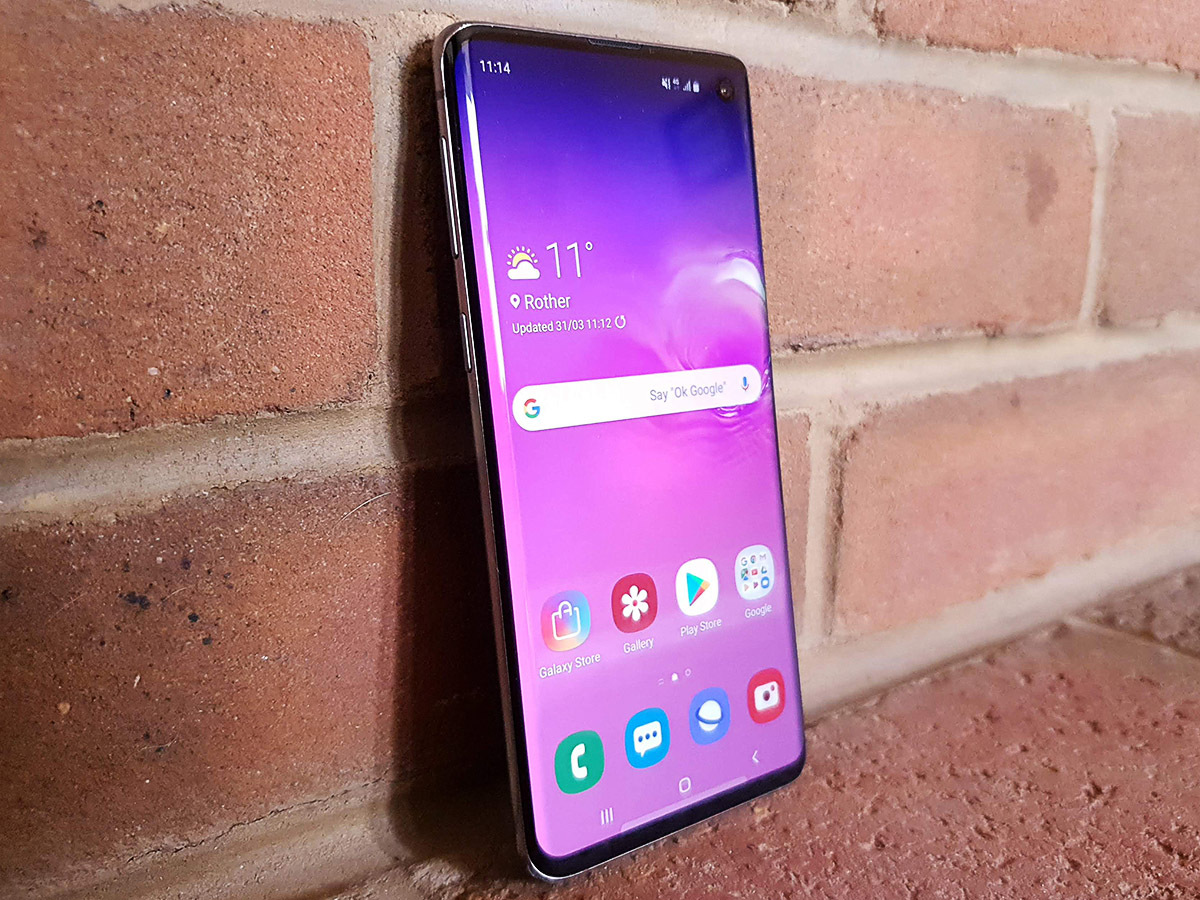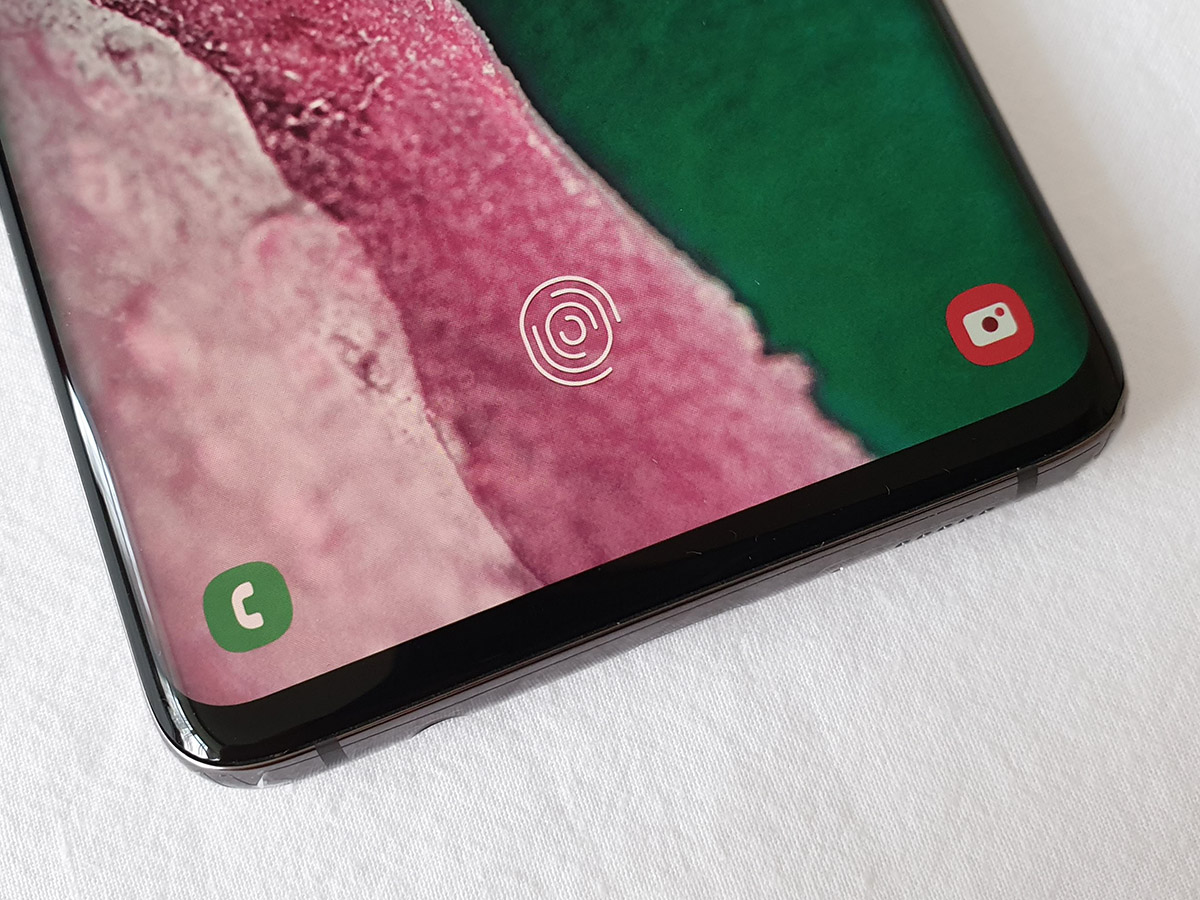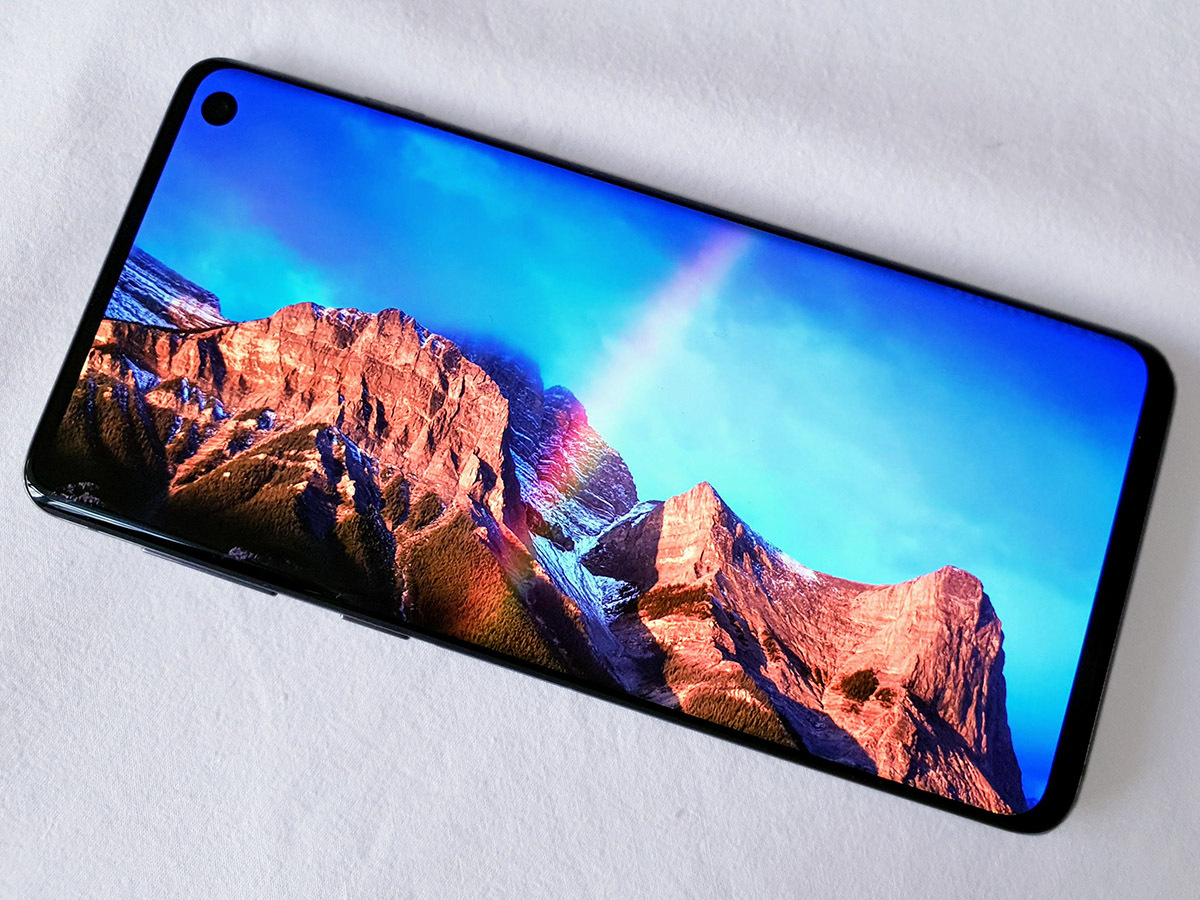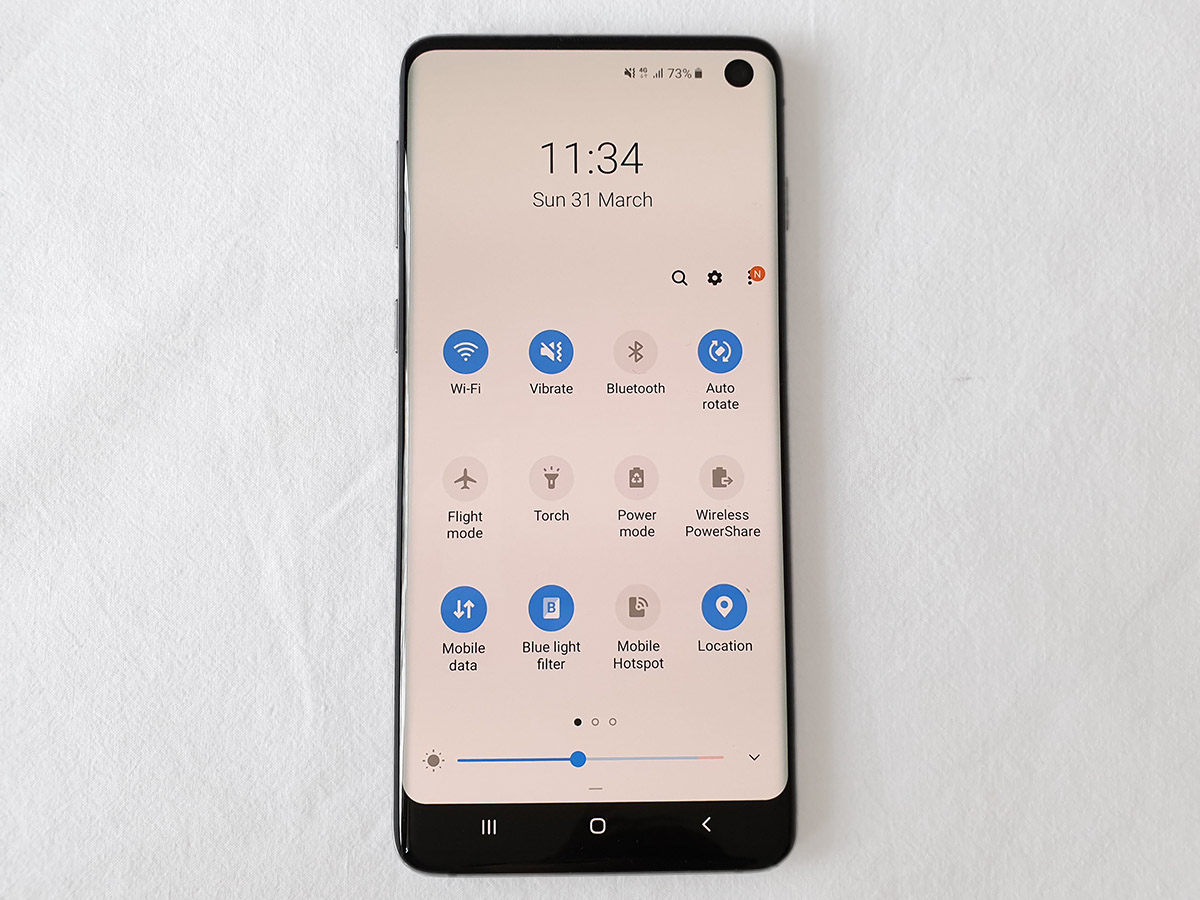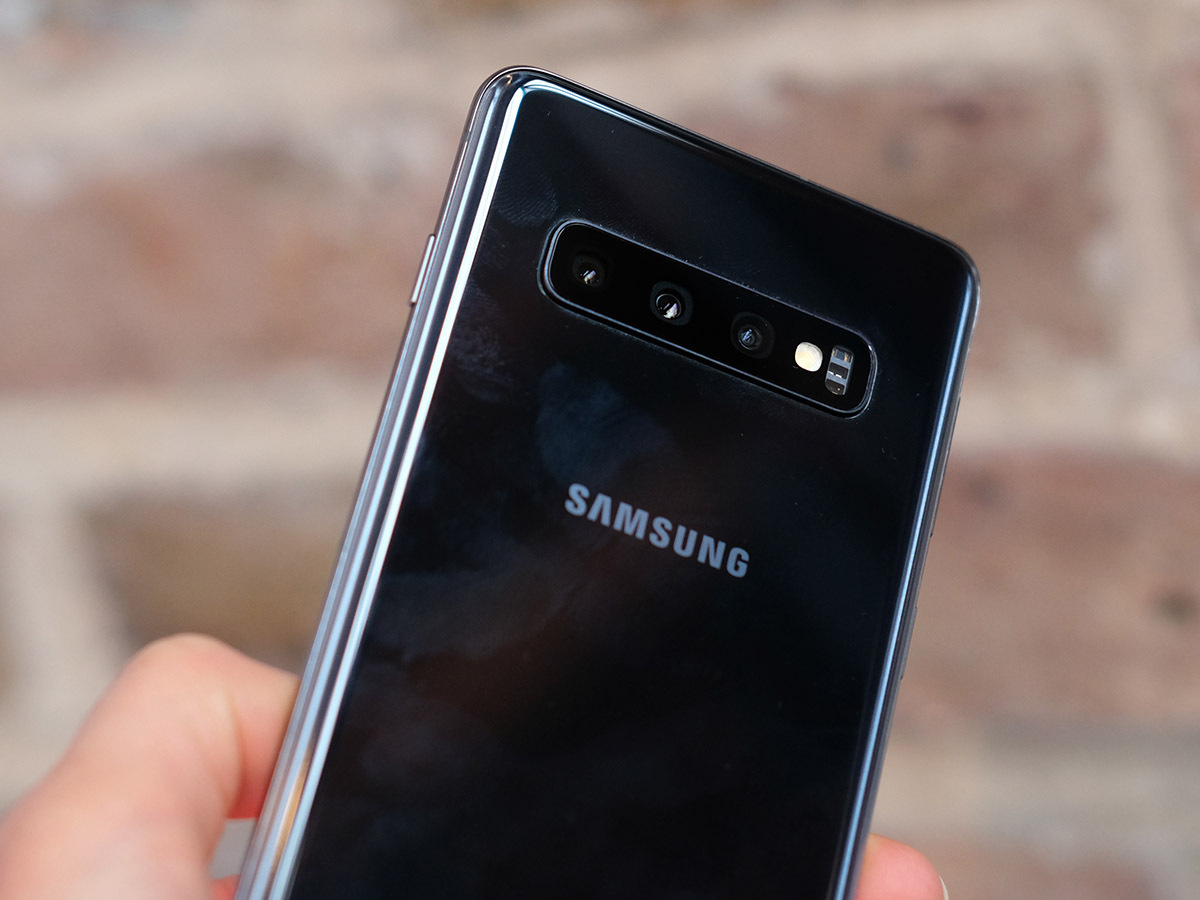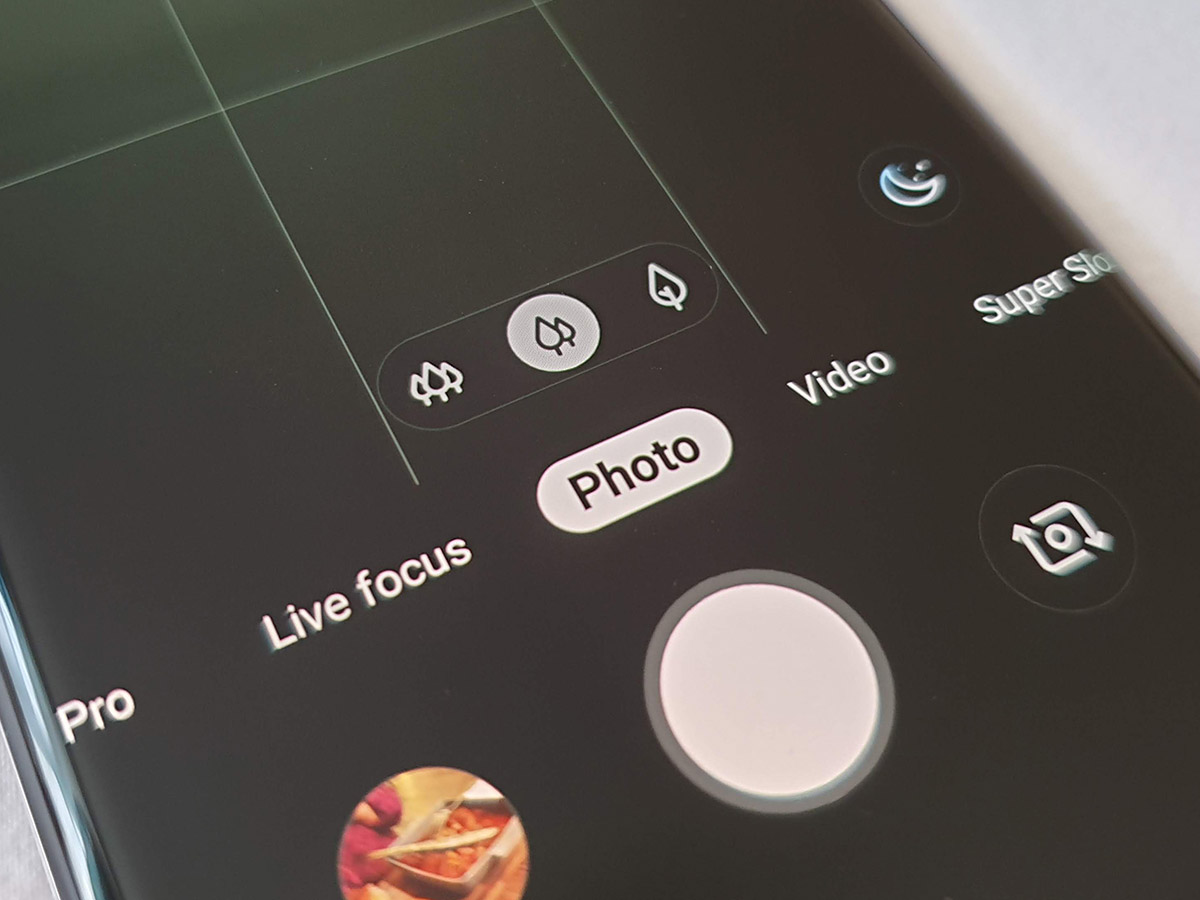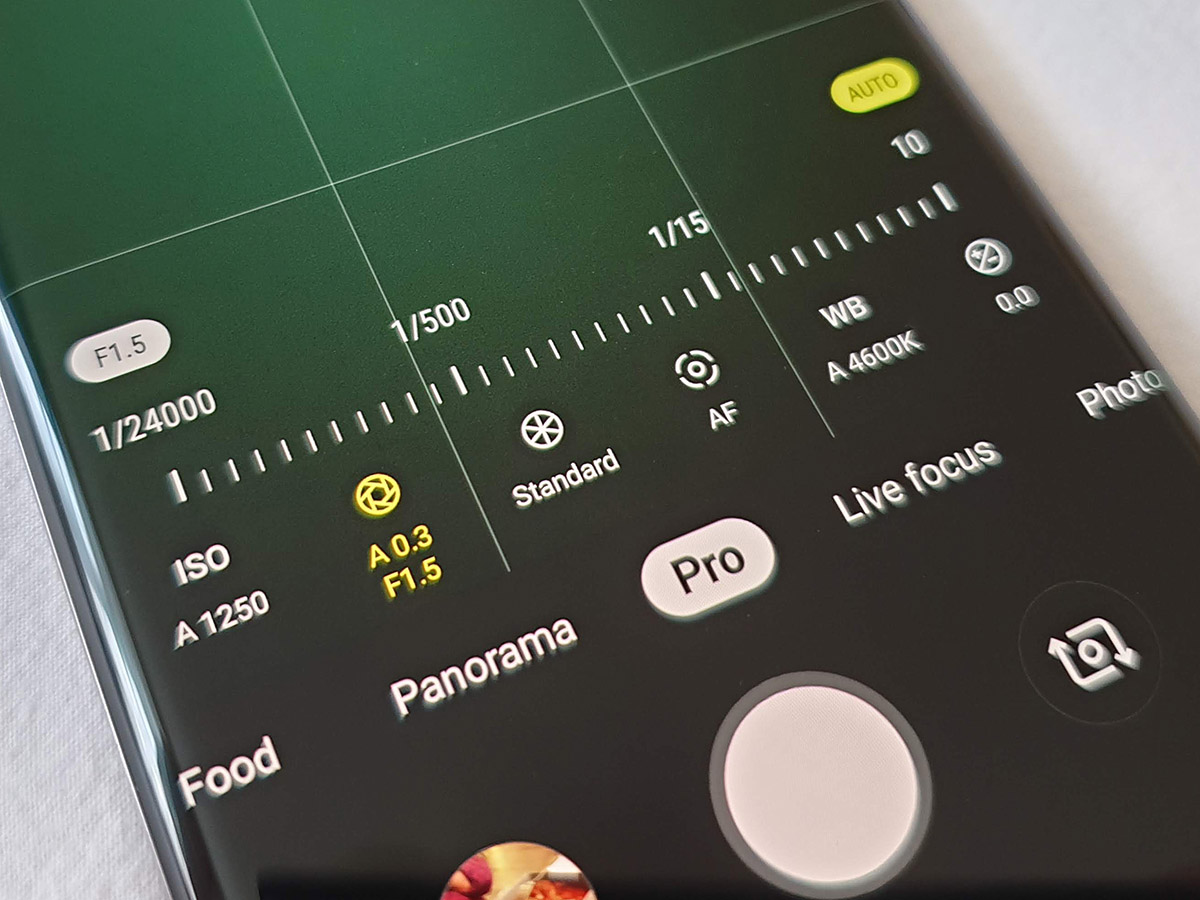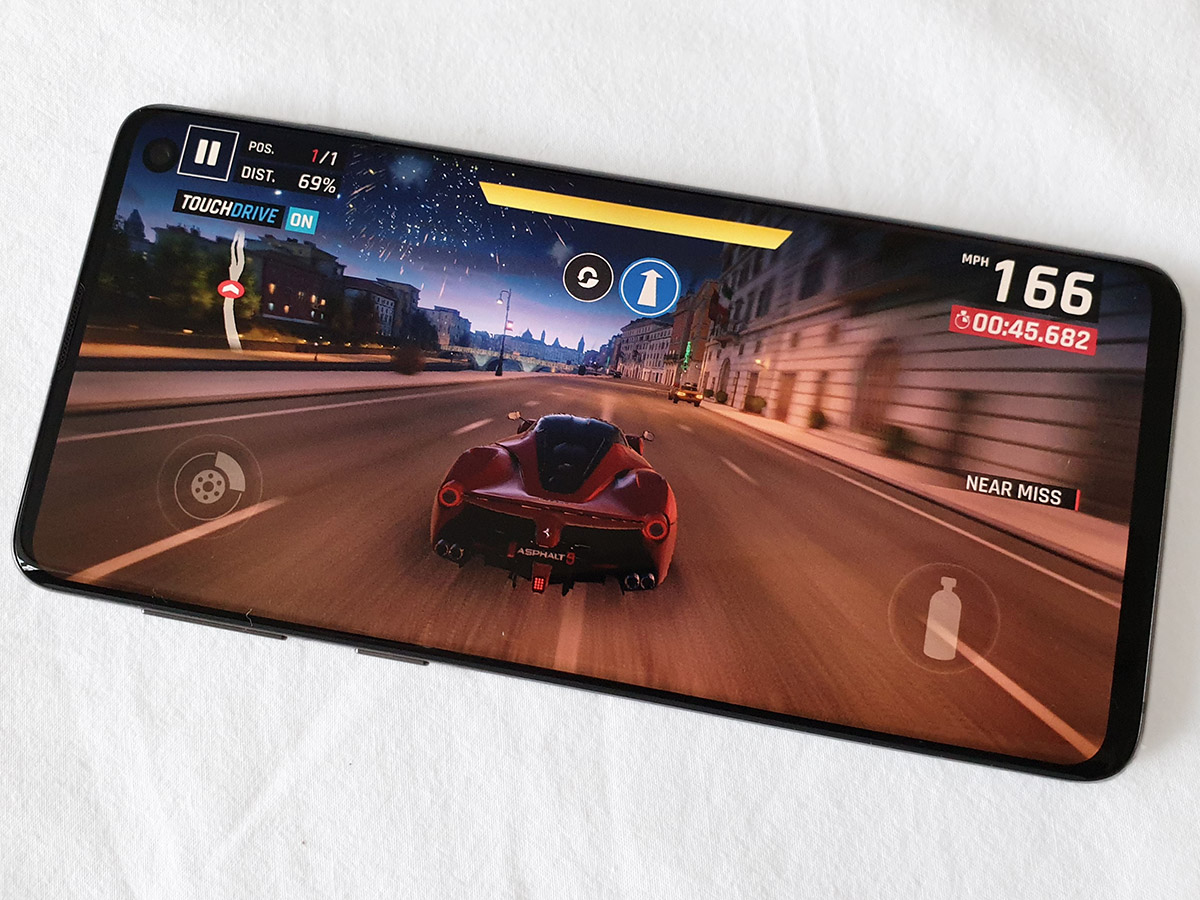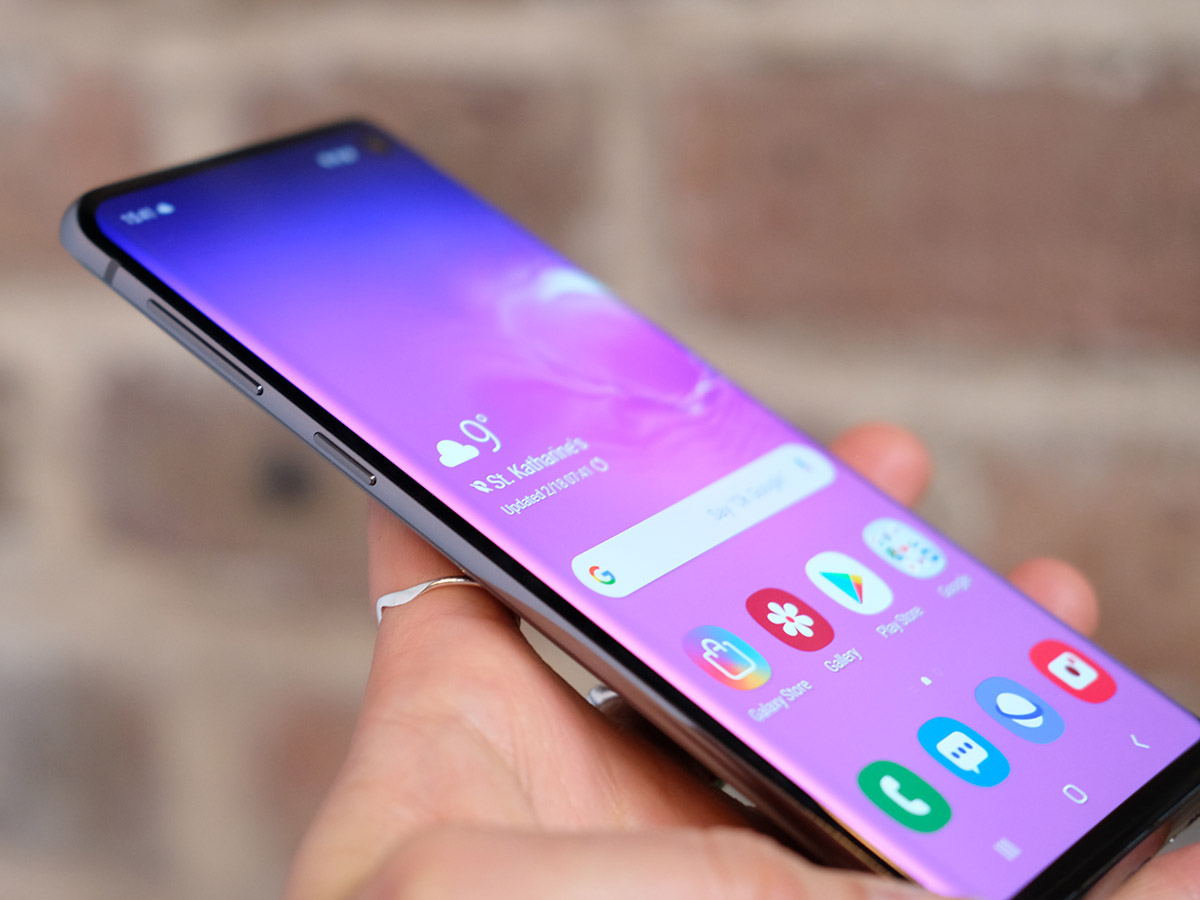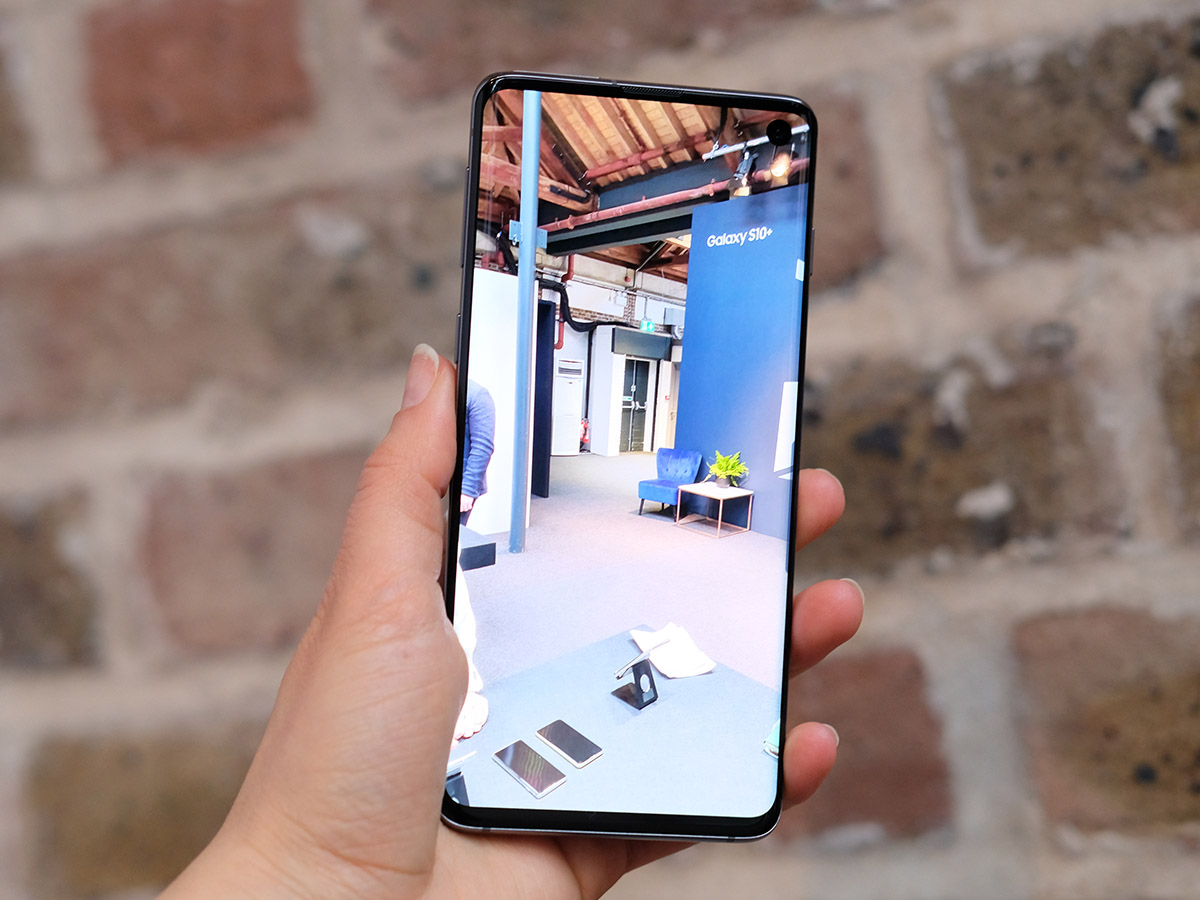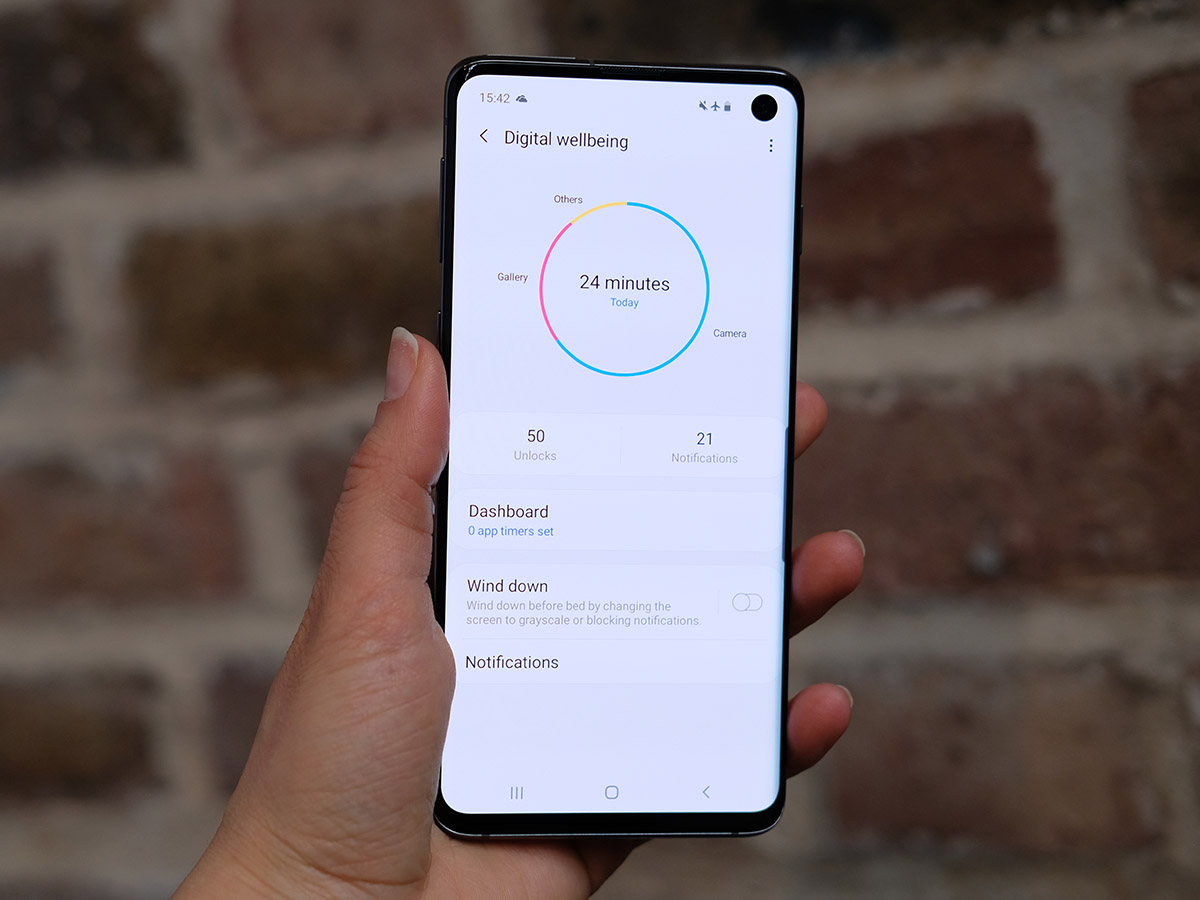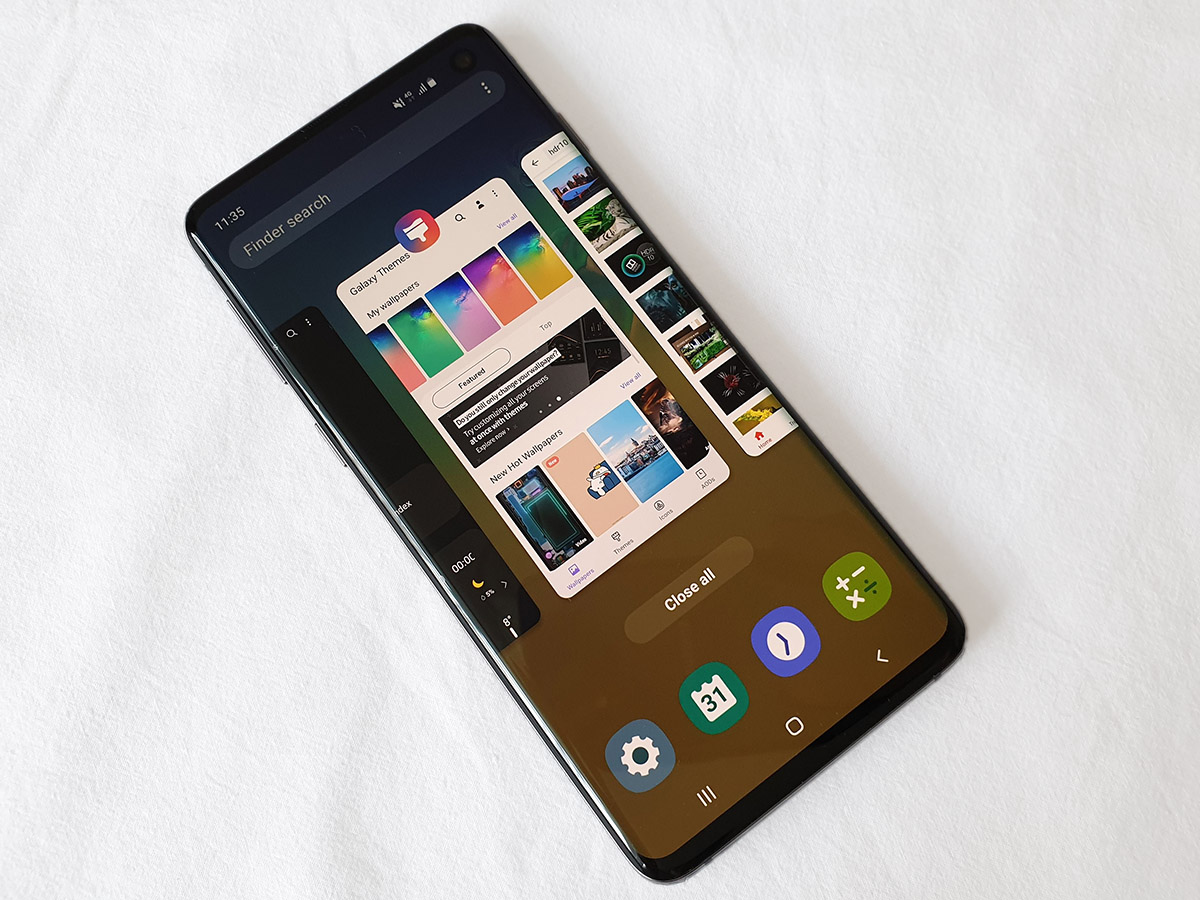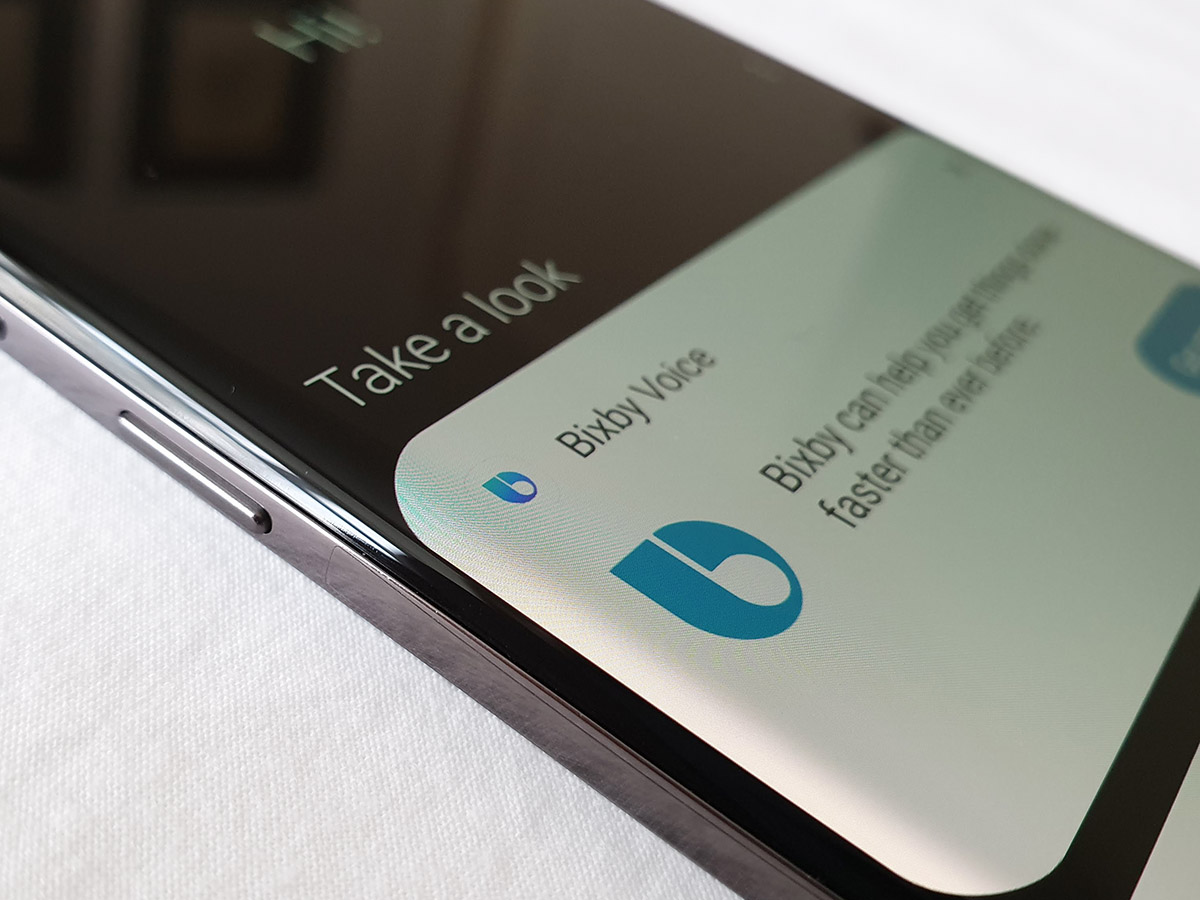Samsung Galaxy S10 review
10th anniversary Galaxy is as close as Android gets to the complete package
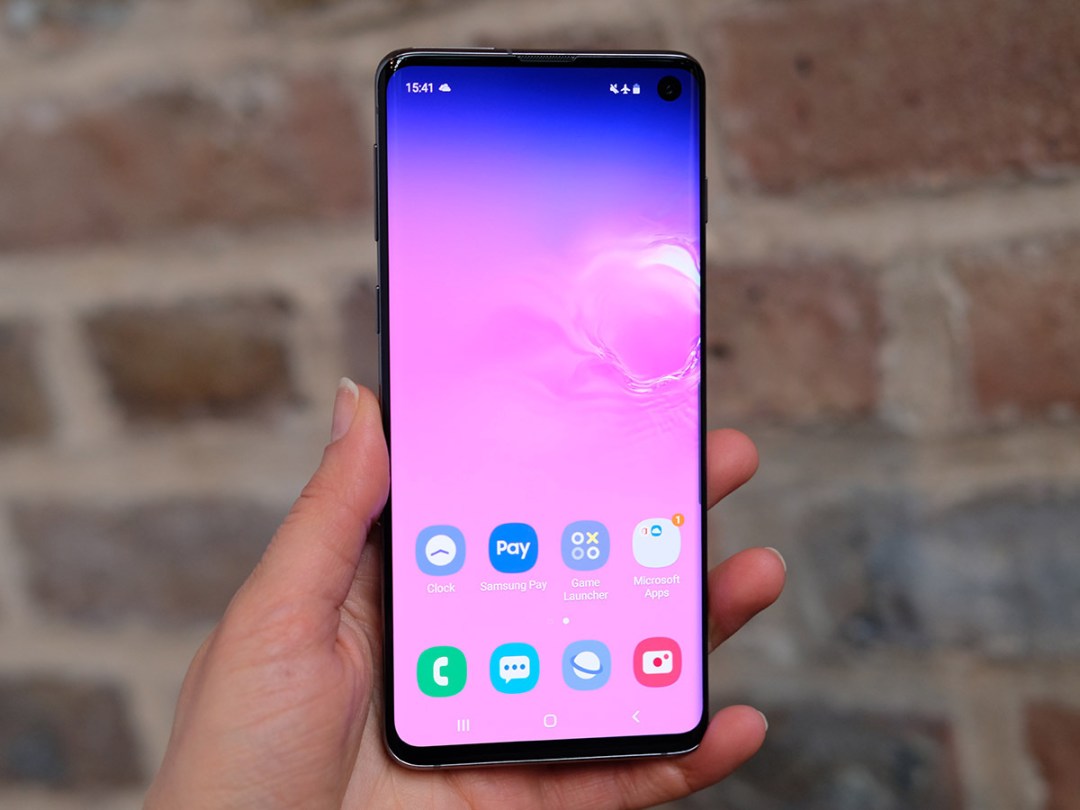
You know the drill by now: the arrival of a new Galaxy smartphone is as big as it gets in the Android world. Think Chrismukkah, 4th of July and pancake day all at once. Big.
That’s a lot to pressure to deliver the goods, and with rivals rapidly gaining ground, Samsung has never had a tougher job of staying the de facto choice for anyone not interested in an iPhone.
The S10 is just one part of a three-prong plan of attack, from mainstream to full-on flagship, and might just be the best of the bunch.
DESIGN & FEATURES: WHATEVER YOU WANT
Does the handset in front of you look familiar? It should: Samsung hasn’t really messed with its Galaxy phone formula for four years now, improving and iterating but keeping the same basic design intact. And why wouldn’t you – the S10 is gorgeous.
The polished metal frame sandwiched between two pieces of glass is undeniably classy. It’s a little bit taller, a little bit wider than the outgoing S9 – but not so much you’ll notice.
A 6.1in screen sounds big, but with a narrow aspect ratio, it’s skinny enough to sit comfortably in one hand. The screen still subtly curves around the sides, and the bezels are even skinnier than last year’s already impressive S9.
Samsung has achieved that with some camera cleverness, bypassing notches and just cutting a hole right through the display to make room for the single selfie cam. It sits in the top right corner, and is sure to be just as divisive as a notch would be, but spend a bit of time with the S10 and you quickly forget it’s there.
Around back, a triple-lens camera array takes pride of place – but more on that below. What you won’t find is a fingerprint sensor, because Samsung has buried it underneath the screen. It uses ultrasonic tech, rather than optical, which makes it a little more accurate but no faster.
Because it doesn’t light up when you rest a digit on it, however, lining up perfectly can be a bit of a challenge. Focus on what’s new and you might miss returning features that have become Samsung staples, like the microSD card slot for adding extra storage (should you fill the generous 128GB of on-board memory) and the 3.5mm headphone jack, which is something of a novelty in a world where other flagships are happy to follow Apple down the path of dongles and adaptors.
The controversial Bixby button also hangs around, but you can at least set it to open another app if you don’t use Samsung’s personal assistant.
DISPLAY & SOUND: HOLE IN ONE
Whether you’re a fan of the hole punch camera or not, there’s no denying the screen it peeks through is one of the best you’ll find on a phone. Remember when "Samsung AMOLED" was a byword for overly vibrant, super-saturated colours? Those days feel like a long way off now.
The S10 delivers accurate, true-to-life hues that are easy on the eye without becoming unnatural. Contrast is unparalleled, with deep, inky blacks and an uncanny ability to avoid reflections and screen glare.
You have the choice of ‘natural’ and ‘vivid’ colour modes (no more granular customisation like the Galaxy S9) but you honestly don’t need to bother with them – the S10 looks its best right out of the box.
This is an HDR-certified panel, which means compatible Netflix clips and YouTube videos look outstanding. Brightness gets boosted to retina-burning levels, which also helps when you step outside. Even in direct sunlight, we had no trouble seeing what was onscreen.
For such a skinny phone, the S10 also has pretty potent set of speakers, making it a rather superb little multimedia machine. The stereo setup is louder than the S9’s, with a clearer mid-range real clarity, although the addition of Dolby Atmos doesn’t really add much to the mix.
CAMERA: TRIPLE CROWN
Here’s where the S10 takes the biggest leap forward from last year. Whereas the S9 had a single 12MP snapper, its successor gets three: one variable-aperture sensor for general shooting, a 12MP telephoto for 2x zoom, and a 16MP ultra-wide for when you absolutely have to get everything into a single shot.
The main and zoom cameras both have optical image stabilisation, making the wide-angle camera the weakest of the three – it has no OIS and a narrower aperture. Still, as long as you feed it enough light, the trade-off is worth it for the expanded view it provides.
Switching between each camera is seamless, and combined give the kind of flexibility you’d need a camera bag full of lenses to pull off with a proper camera.
The pixel count may not have changed, but Samsung’s software and image processing algorithms have learned a few more tricks. Auto HDR is now better able to cope with bright skies, exposure is more natural and the balance of highlights and shadows is all rather impressive.
You’d need to put an S10 side-by-side with an S9 to spot the (admittedly small) upgrades, but they are definitely there. In daylight, the S10’s photos look great, with plenty of detail, accurate colours and well-judged exposure. Small details can sometimes be lost in the noise reduction and sharpening process, but you’ve got to zoom in to notice.
An Apple iPhone XS might stay a little more true-to-life and retain more subtle detail, but the Samsung’s photos are often easier on the eye. It’s low light where the S10 falters. It can still capture decent images, but the scene recognition system’s night mode just can’t compete with the Huawei Mate 20, Google Pixel 3 ot the unbeatable P30 Pro.
Ultimately though, and considering every day use – do you want outright quality or the versatility of multiple lenses? For most people, the S10’s photos will be more than good enough.
PERFORMANCE: EXYNOS IS ENOUGH
The silicon you’ll find underneath the S10’s glorious glass body depends on where you live. Much of the world gets Qualcomm’s fastest mobile chip, the Snapdragon 855, but here in the UK we get one of Samsung’s own Exynos 9820 CPUs.
This only really matters if you’re into benchmark scores, as the Exynos loses out to the Snapdragon in popular tools like Geekbench. It even falls behind Huawei’s Mate 20 Pro on paper, and lags behind the iPhone XS too.
But for everyone else, all you need to know is that the S10 is still crazy quick, with no lag, stutter or slowdown noticeable in any app or game we threw at it. 8GB of RAM certainly helps. A built-in device maintenance mode should keep that performance strong a year down the line, too.
Gaming is where the S10 catches up, besting the Mate 20 Pro and delivering frame rates on par with the top Snapdragon phones. If you’re hankering for a bit of Fortnite on the go, know that this phone will play smoothly at the highest settings, even when the going gets tough.
BATTERY LIFE: IS THAT ALL YOU’VE GOT?
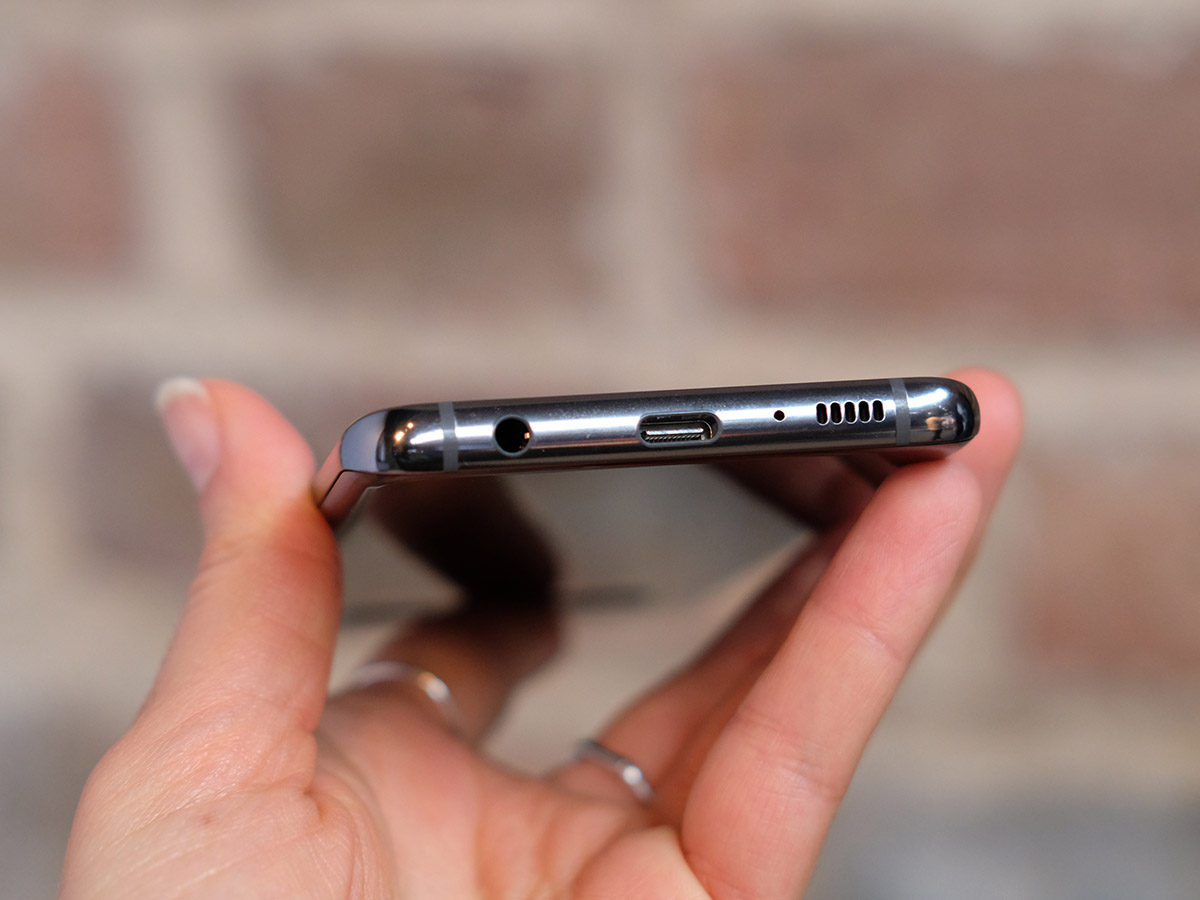
The S10 isn’t lacking for performance, then, but it could perhaps use a bit more staying power. A 3400mAh battery isn’t huge, and with a power-hungry Exynos chip to keep ticking over, you’ll be lucky to last an entire day without dipping into the power saving modes.
Video and games are naturally the biggest energy sappers, eating as much as 20% battery for a single hour of HDR Netflix streaming. It’s a similar story with 3D games, so claiming a PUBG Mobile win could drain a fifth of your total charge.
Stick to simpler stuff like social media, music and email, and you’ll get to bedtime without running out completely, but you’ll want to recharge overnight. It takes an hour and a half to go from empty to full using Samsung’s bundled USB-C charger – not outstanding, but hardly slow either.
Wireless charging adds a bit of convenience, and you can even share power with other Qi-compatible gadgets if you like, although considering the S10 isn’t the longest-lasting phone, you’ll perhaps want to stick to giving your wireless earbuds a quick zap rather than offering to refuel a friend’s dead phone.
It’s not fast, and you’ve got to toggle it on whenever you want to give it a whirl.
OS & SOFTWARE: PIE MEETS ONE UI
With a new version of Android to show off on the S10, Samsung took full advantage and overhauled its interface completely.
The new One UI is much simpler than before, with apps optimised to make things easier to reach on taller, skinnier phones. That’s great – if you use Samsung’s apps. Most of us are quite happy with Google’s web browser, email app, image gallery and the like, so it can feel a bit redundant.
The notification tray and Settings menu get the biggest visual shake-up, so while you might have to dig a menu or two deeper to find the exact setting you want, overall things are easier to navigate. A night mode switches system colours from white to black, which helps stop the screen from searing your eyeballs when scrolling at night.
Android 9.0 Pie has introduced digital wellbeing, to help you keep tabs on your phone habits and dial things back a bit if you’re spending too much time on Facebook or Instagram. You have to set timers manually for each feature, so there’s still a fair bit of willpower involved.
The home screen launcher feels familiar, with the app drawer revealed by an upwards swipe. It feels a little sparse out of the box, but it’s easy enough to ramp up the density and fit more apps onscreen at once.
Samsung has stuck with the typical Home, Back and Recents navigation, albeit in a backwards order to the Android norm. You can quicky swap ’em round again, or go for gesture controls instead. Importantly, beyond the visual changes this still feels like a Samsung phone, so returning users will feel right at home.
SAMSUNG GALAXY S10 VERDICT
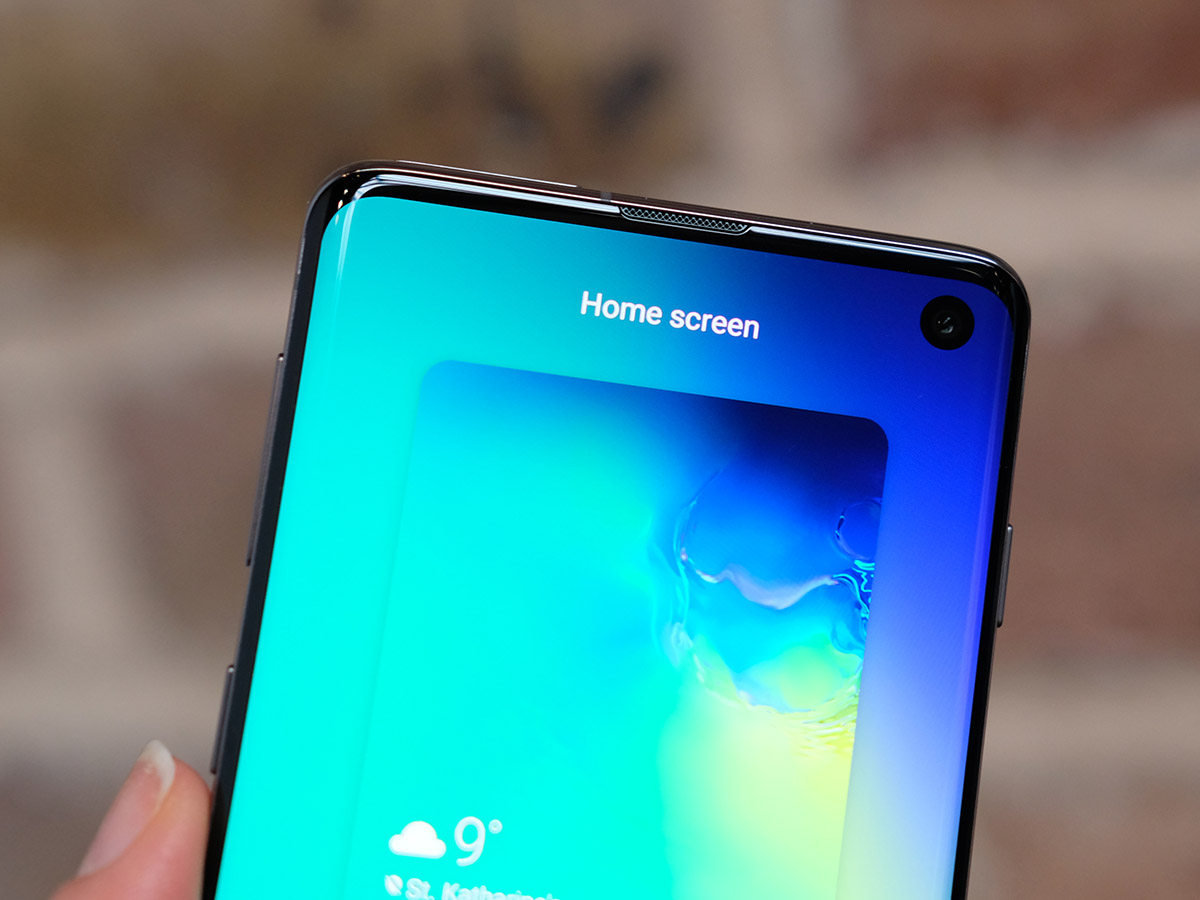
Is the S10 the most powerful smartphone around? Does it have the very best screen? Can it last the longest between charges? We’re used to Samsung setting the gold standard for Android, so it’s hard to believe the answer to all those questions is "no".
Keen photographers will get excellent results (especially in low light) from a Google Pixel 3, or the Huawei P30 Pro. Plus, the Huawei Mate 20 Pro and P30 Pro have even greater stamina.
A OnePlus 6T is much better value. But the S10 is an incredibly well-rounded Android on every other front.
Handset prices have been creeping ever higher over the past few years, and £800 SIM-free is mighty pricey, but it does undercut the Apple iPhone XS by £200 and feels mo. That amount does mean it exists in a strange sort of middle ground, with the S10+ boasting a bigger screen and longer-lasting battery for only a little more cash, and the S10e being much more affordable with only a few minor concessions.
Still, if you’ve got to have the best Samsung and arguably the best Android, yet don’t see the point in twin selfie cameras or ridiculous zooming capabilities, the S10 is pretty much all the phone you’d ever need.
Tech specs
| SCREEN | 6.1in, 3040×1440 AMOLED w/ hole punch camera, HDR10+ |
| CPU | Exynos 9820 octa-core |
| MEMORY | 8GB RAM |
| CAMERA | 12MP f/1.5-2.4 wide, 12MP f/2.4 telephoto, 16MP f/2.2 ultrawide w/ dual-pixel, PDAF, OIS, LED flash. 10MP f/1.9 front |
| STORAGE | 128GB on-board, microSD expansion |
| OPERATING SYSTEM | Android 9.0 Pie w/ OneUI |
| BATTERY | 3400mAh non-removable |
| DIMENSIONS | 150x70x7.8mm, 157g |
Stuff Says…
The S10 is better than ever. The mainstream Galaxy might now play middle child to more powerful and more affordable variants, but there’s nothing else running Android that’s quite as well-rounded.
Good Stuff
Truly versatile three-lens camera
Gorgeous display and top-notch performance
Feature-packed in ways few rivals can match
Bad Stuff
In-display finger scanner not perfect
Not the best battery life
Price hike makes the S10e a tempting alternative
